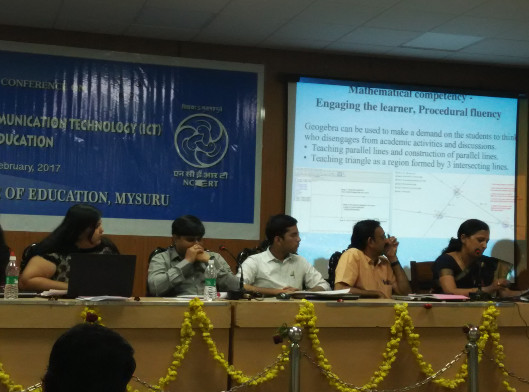Mathematics teaching in government high schools is challenging. The general difficulty in mathematics, of moving from concrete to abstract, is aggravated by lack of home support, poverty, high stakes SSLC examinations, and students not being ready for high school concepts. Teachers often transact the syllabus, assuming students to have an understanding of prior concepts, though literacy and numeracy levels of students often lags substantially. This contributes to students being disconnected from mathematics and impacts their engagement and learning.
The NCF 2005 talks about constructivist pedagogies that help students engage and construct knowledge. Different curricula discuss mathematics learning competencies to include engaging, exploring and communicating with mathematics, using mathematical knowledge for finding patterns, making and testing conjectures, justifying assertions with persuasive arguments, solving unfamiliar problems in concrete and abstract situations, verification of solutions etc.
Papert1 has argued that supporting students to construct digital artefacts to develop and express their understanding could help teach mathematics. Through a case study of government high schools, this paper examines how teachers use the Geogebra educational software, to address challenges and develop student engagement and competencies, and their own professional development. The case study is based on authors’ work in these schools, observations of students, review of student’s work, classroom discussions and interactions with other teachers.
The interactive visual interface, precision construction and animation possibilities of Geogebra helped students navigate language gaps that formal mathematics communication required, and provided advantages over physical models. Using the interface to replicate physical construction processes helped students to ‘do mathematics’, visualize mathematical possibilities and articulate their mathematical understanding and imagination. This supported movement towards logical proofs, including in strengthening learner reasoning to work independent of the specific diagrams drawn. The use of Geogebra by students to create artefacts supported assessment of their learning, by evidencing their thinking processes.
When Mathematics teachers create resources using Geogebra as OER and share the same with their peers, it enables wider use of these resources to improve conceptual understanding and clarity of teachers and students across a wider set of schools. Geogebra files have been shared by many members of the Mathematics 'Subject Teacher Forums' and this has been found useful by teachers.
- 1. Papert. 1993. Mindstorms: Children, Computers, And Powerful Ideas

